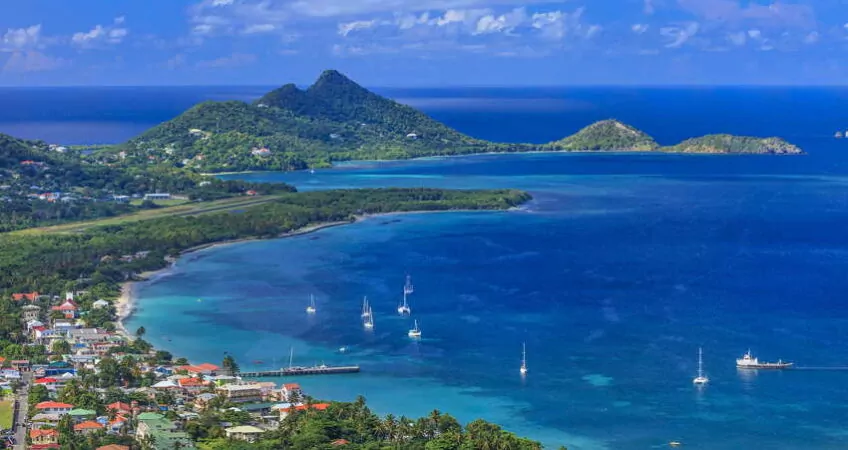
What You Need to Know: Global Real Estate Investing
Take This Reality Check Before Making Any Property Purchase Overseas
World events are creating chaos and uncertainty… which is translating into the greatest opportunity of our lifetimes to own real estate overseas. The currency discounts alone are irresistible.
However, if you’re considering (as we strongly recommend you should be right now) diversifying into foreign property markets for the first time, you might rightly feel intimidated or overwhelmed. How, exactly, do you buy a piece of real estate in another country?
You arm yourself with a good understanding of how foreign property markets work. We’re here to help.
Whether you’re looking at making your first overseas property purchase or your 50th, start with the fundamentals… including formal due diligence
Here’s a checklist of questions you should know the answers to before committing to a purchase. This list amounts to a reality check for any potential investment. Keep it handy…
11 Things To Consider Before You Buy
| 1. | Access—How close is the nearest airport? Do you have to make a connection after arriving in the country? For rural properties, is there year-round access to the area? Not all roads are accessible year-round in Nicaragua, for example, or in parts of other countries in this region. For city properties, what are the traffic patterns? How will they affect your lifestyle or your ability to rent the property? |
| 2. | Security—How will security be provided? Apartment buildings in Latin America generally have doormen 24/7. In most buildings in France, the front door to the building or the building’s courtyard, as the case may be, is kept locked at all times. Access is via a code shared with building residents only. Many buildings in France also have a concierge (although a concierge is more for service than security). If you’re buying into a private development anywhere, you should expect 24/7 security at the entrance. If you’re buying a farmhouse in the country, will you need to hire someone to keep an eye on the place? |
| 3. | Medical Care—Where is the nearest medical care facility? How many minutes to get there by car in both the wet and the dry season? |
| 4. | Title Insurance—Is title insurance available for the property from a reputable title insurance company? Insurance is available in most Latin American countries from either Stewart or First American Title and in much of Europe as well. If a developer or real estate agent tries to steer you away from getting title insurance, you should probably walk away from the deal. Title insurance isn’t necessary, but it should be an option. |
| 5. | Construction—If you’re buying a lot in a development, is there a building requirement (that is, a specified period of time within which you must build on your lot)? A building requirement is both a pro and a con. With one, you could be forced to build before you want or can afford to. Without one, you could be buying into a development that never develops. If no one is forced to build, you can’t be sure anyone ever will. |
| 6. | Development Community—If you’re buying into a planned development community, what construction and design standards are in place? This can be one of the big benefits of choosing this option rather than buying a house or a lot off on your own. Zoning is almost non-existent in Latin America, and, unless covenants and building restrictions are put in place (as in a private community), you may not like what your neighbors decide to erect next-door. |
| 7. | Infrastructure—This is important on both a general country and a specific property or development level. At the country level, how often does the electricity go out in the region where you’ll be living? How reliable are the cable and internet service? What is the condition of the roads? How is water provided to the town or city? What about wastewater? Ask these questions of everyone you meet in the area.On an individual property or development level, does the developer, apartment building, or house have a generator for when electricity goes out? How about water storage in case of interruption to the normal water supply? What amenities are in place? Is the building or property well-maintained? Is there enough water and water pressure? Is there hot water? What’s the plan for waste disposal? Either the developer has installed these systems and covered the costs, or he hasn’t. If he hasn’t… who’s going to? (Here’s a hint: You are.)
When buying into a planned development, buy what you see. Do not take for granted that further infrastructure will be installed and do not believe every infrastructure promise a developer makes. If you see paved roads, then there are paved roads. If you see a clubhouse, then there’s a clubhouse. I say again: Buy what you see. And make sure the price reflects that current reality. Don’t pay a premium for “planned infrastructure.” |
| 8. | Home Owner’s Association (HOA)—What are the fees or, in the case of a new development or a pre-construction building, the projected fees? If you’re buying into a completed development, ask to look at the current financial statements. Has the HOA management created a reserve fund? Do the expenses match the level of visible amenities and maintenance? Are things being maintained, or do you see a lot of deferred maintenance? You should worry about both unusually low fees and deferred maintenance, because they may result in surprise assessments down the road.For a building or planned community not turned over to the owners’ management group yet, has the developer estimated the fees to a level that should maintain the planned amenities? While no one wants to pay more than necessary for HOA fees, you also don’t want to be lured in by a low projected fee only to have them go up substantially once the developer turns over maintenance to the owners. The costs will be what they are. If projected HOA fees don’t cover them, one of two things will result. The property will slowly deteriorate or owners will be required to meet regular capital calls beyond the HOA amounts. |
| 9. | Construction—How will you build (if that’s your plan) from thousands of miles away? Who will oversee construction for you? How often will you be able to visit the site yourself? I’d recommend at least monthly. When budgeting a construction project, understand what’s included in the cost. You want to see written specifications. Specifics to verify include 220v water heaters and air conditioners and hot water lines to all sinks and showers. In Latin America, it’s common to provide cold water only to guest and maid bathrooms. Also confirm whether the quote you’ve been provided includes lights, fans, faucets, fixtures, and appliances. Assume nothing. |
| 10. | Amenities—What amenities exist in the development or apartment building? Pools, parks, golf, tennis, fitness, clubhouse, etc. These all have value, but they also cost money to maintain. What amenities/services are in the neighborhood? If you’re buying an apartment in a city, you should walk the few blocks around the apartment to see what is nearby. Shops, restaurants, parking, parks, public transportation, these can add value for rental and resale. |
| 11. | Track Record—If you’re buying from a developer (either a lot in a planned community or a pre-construction apartment in a building that hasn’t yet been completed), is the development company financially sound? Do they have a track record? |
Kathleen Peddicord



